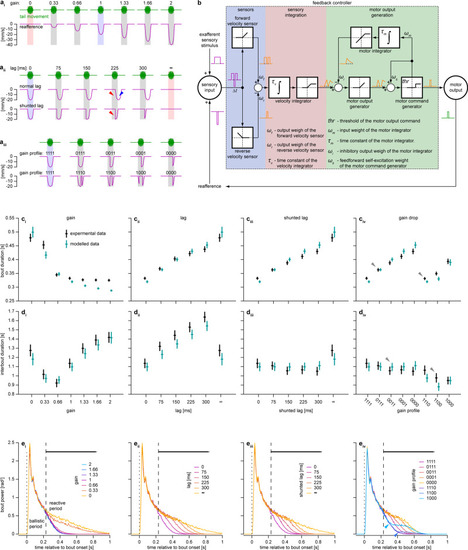Fig. 2
- ID
- ZDB-FIG-221221-8
- Publication
- Markov et al., 2021 - A cerebellar internal model calibrates a feedback controller involved in sensorimotor control
- Other Figures
- All Figure Page
- Back to All Figure Page
|
Acute reaction to unexpected perturbations in visual feedback can be implemented by a feedback controller.
a Reafference conditions used to induce acute reaction: gains (i), lags (ii), and gain drops (iii). Vertical shaded bars indicate swimming bouts, blue and red bars indicate normal reafference and open-loop conditions, respectively. Red triangles indicate insufficient reafference in the beginning of the bout, blue triangle indicates excessive reafference after the bout offset. Gain drop conditions (aiii) are labeled by four digits indicating the gain during the corresponding bout segments (e.g., condition 1100 has normal reafference during the first 150 ms of the bout but no reafference for the next 150 ms). b Feedback control model of acute reaction. White squares depict mathematical operations performed by respective nodes: integration, rectification, saturation, and thresholding. Magenta and green traces represent input and output of the model, orange traces represent output of respective nodes. Seven small Greek letters and |

